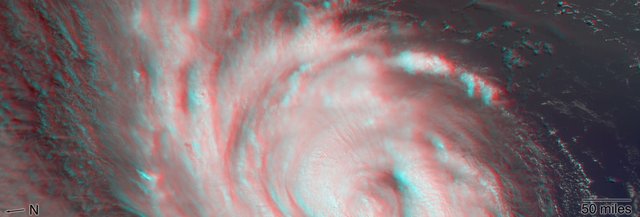Lesson .
.Cloud Computing: A 'Pi in the Sky' Math Challenge
Overview
The "Pi in the Sky" math challenge gives students a chance to take part in recent discoveries and upcoming celestial events, all while using math and pi just like NASA scientists and engineers. In this problem from the set, students use the mathematical constant pi to calculate the amount of potential rainfall in a cloud.
Materials
- Pi in the Sky 6: Cloud Computing worksheet – Download PDF
- Pi in the Sky 6 answer key – Download PDF
Background

The Terra satellite uses the nine cameras on its Multi-Angle Imaging SpectroRadiometer, or MISR, instrument to provide scientists with unique views of Earth, returning data about atmospheric particles, land-surface features and clouds. Estimating the amount of water in a cloud and the potential for rainfall is serious business. Knowing how much rain may fall in a given area can help residents and first responders prepare for emergencies like flooding and mudslides. In Cloud Computing, students can use their knowledge of pi and geometric shapes to estimate the amount of water contained in a cloud.
Procedures
Cloud Computing
The MISR instrument on NASA’s Terra satellite has nine cameras that view Earth from different angles to study features on the surface and in the atmosphere in 3D. One of MISR’s tasks is to collect measurements of clouds, which are full of liquid water or ice. Scientists can use the measurements to estimate how much water is in a cloud. Imagine MISR flies over a cloud that from directly overhead looks like a circle, 10 km across. From the side, it looks like a soup can, indicating it’s roughly the shape of a right cylinder.
Given that the cloud’s top and height measure 16 km combined, calculate the approximate volume of the cloud in cubic kilometers.
Given the liquid water content of a typical puffy cumulus cloud, calculate the total amount of water in the cloud.
If all the water in the cloud fell as rain, how many Olympic size swimming pools could it fill?
Cumulus cloud liquid water content = 500,000 kg/km3 Olympic swimming pool volume = 2,500 m3 Water density = 1,000 kg/m3
Assessment
Extensions
Participate
Join the conversation and share your Pi Day Challenge answers with @NASAJPL_Edu on social media using the hashtag #NASAPiDayChallenge
Blogs and Features
Related Activities
Multimedia
Facts and Figures
Missions and Instruments
Websites
Lesson Last Updated: June 20, 2025










